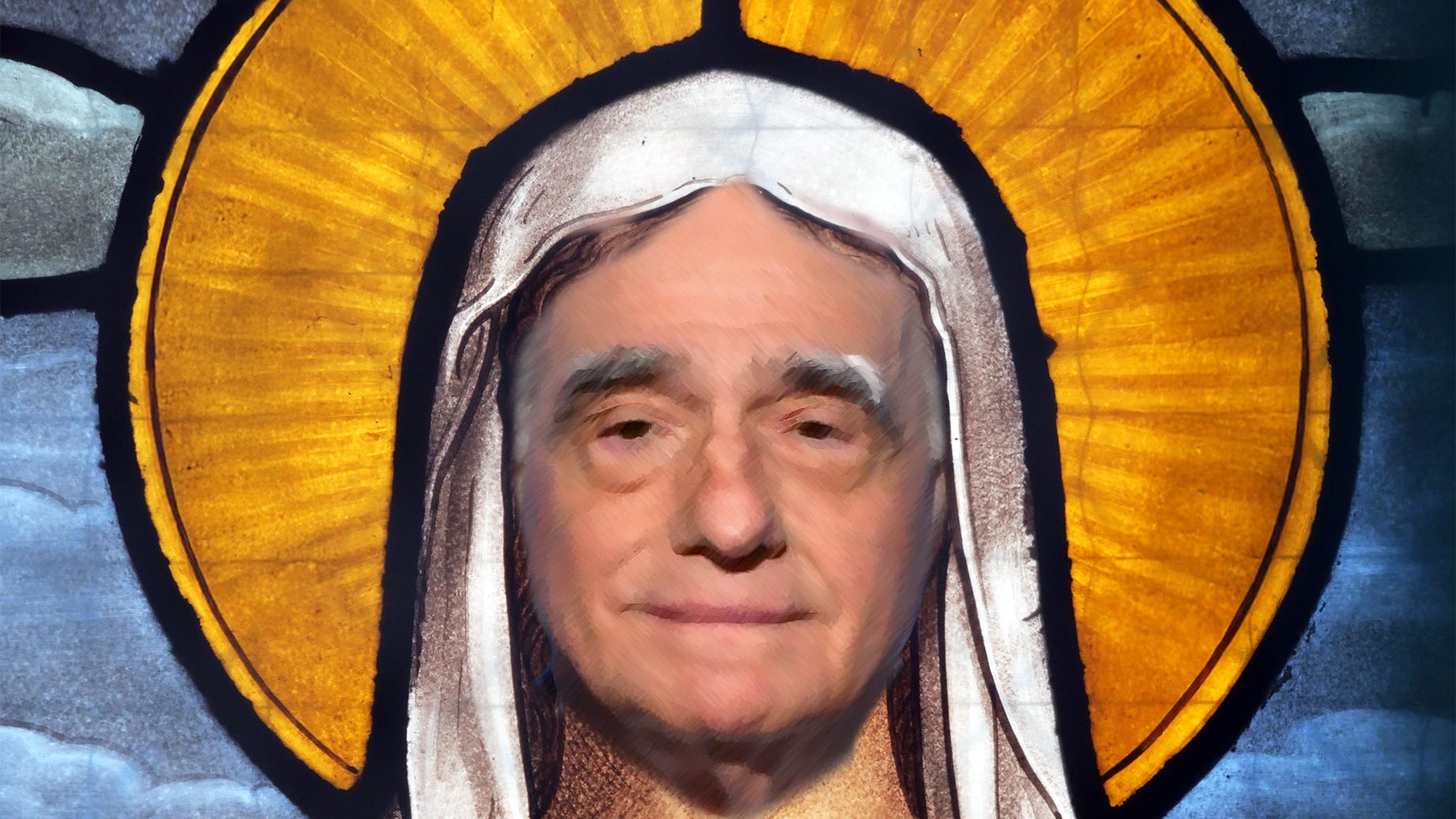The Catholic Church used to require three verified elements from a person before beatifying them saints. First, they need to be dead, preferably martyred. Then, a miracle is required. And finally, the individual must be able to intercede on behalf of people who pray to them.
These days all you really need is Instagram and/or TikTok.
Martin Scorsese is almost there. For miracles, watch his Lazarus act, rising from the dead a number of times – as we learn from Rebecca Miller’s five-part documentary – once from a drug-induced meltdown when his internal organs Peckinpahed; and several times when his career tanked.
And as for people praying to him, Miller’s documentary comes with the likes of Spike Lee, Brian De Palma, Margot Robbie, Leonardo DiCaprio, Sharon Stone and Steven Spielberg genuflecting at the shrine of the bushy-eyebrowed one.
“There was never anyone like Marty, and there will never be anyone like him again,” Spielberg says, which is praise indeed. Though Spielberg’s praise is as rare as a Stephen King quote on a book cover, I can’t help but wonder: didn’t he say something similar about Stanley Kubrick, Michael Curtiz, Federico Fellini, Francis Ford Coppola…?
It’s refreshing to have De Palma’s blunt honesty when he comments on his immediate reaction to Raging Bull: “Not again!” he remembers thinking, before adding: “We were a little bit competitive.”
Talking heads aside, Mr Scorsese is an excellent reminder of why we should resist the beatification of our artists. Ultimately, we end up with less when we praise people too much.
There’s a cuddlification of Martin Scorsese already taking place with his daughter Francesca’s Instagram account. It’s fun to see them being goofy together, but this needs to be resisted, the way we should also resist (incidentally) the smoothing over of someone like David Lynch.
Scorsese is a spiky customer: difficult and uncontainable, whose caresses are slaps and who might shine a light on the world or flick a cigarette in your eye. You think I’m being funny? Like a clown, to amuse you?
His upbringing in Little Italy directly inspired several of his films, including his superb intimate documentary Italianamerican starring his sitcom parents, and his breakthrough feature Mean Streets. One revelation was how deeply his own family had been tied to the mobsters around him. In fact, the real-life inspiration for Johnny Boy – Robert De Niro’s character in Scorsese’s first collaboration with him – makes an appearance in a way as unexpected and entertaining as the character himself.
Coming from the New York branch of the generation of TV brats – Spielberg, Coppola, De Palma, George Lucas et al – who swept out the old Hollywood and brought about some of the most influential and exciting cinema of the 1970s, Scorsese was late to make his impact. He’d already made two films before Mean Streets, one a Roger Corman-produced Bonnie and Clyde rip-off, Boxcar Bertha, and which was greeted by his mentor John Cassavetes with the unbeatable bit of tough love: “Congratulations, you’ve just spent a year of your life making a piece of shit.”
Alice Doesn’t Live Here Anymore brought him more traditional plaudits including an Oscar for its star Ellen Burstyn. His next collaboration with De Niro was Taxi Driver and the rest is history. Except it isn’t, is it?
Suggested Reading


Are the movies finally getting mental illness right?
Watch the film today with its loneliness, and inexorable slide to sleazy violence and you’re not watching history. You’re watching the news. Trump, Incels and MAGA, male toxicity and white fragility, avant la lettre.
Then there was hubris and drugs – New York, New York – then there was redemption – Raging Bull. Then there were flops and depression – The King of Comedy – then there were hits – The Color of Money. The sine wave of Scorsese’s career moved with the combined weather and electricity of personal obsession and the vagaries of a constantly changing cultural and commercial background.
In the 1980s and 90s he despaired that the days of director-led epics were over. His pet projects – The Last Temptation of Christ and Gangs of New York – were on hold for decades.
Only Spielberg, who more than anyone else had been responsible for ushering in the blockbuster model, could get large scale and apparently uncommercial films such as Schindler’s List off the ground.
But Scorsese has been fortunate in his friends and collaborators. First, De Niro, who starred in so many of his best films, including perhaps his masterpiece diptych Goodfellas and Casino. Then, Nicolas Pileggi, the non-fiction author who became the co-screenwriter of those two films.
Mike Ovitz, his high-powered agent, gave him the means to make The Last Temptation of Christ when it didn’t seem possible, and Leonardo DiCaprio who helped bring big budgets to Gangs of New York, The Aviator, Shutter Island and The Wolf of Wall Street.
Thelma Schoonmaker, his longtime editor, is another key collaborator, as was Barbara De Fina, who produced a number of Scorsese’s films, as well as marrying him at one point. She was his fourth wife.
His third, Isabella Rossellini, gives us an insight to living with Scorsese that is affectionate but exasperated. He sounds like he was a bit of a tit to live with.
The fact is that these violent, disturbed visions didn’t come to our screens easily from the auteur on high. They were the results of feisty collaborations, compromises, late nights and uncertainty and at some personal cost, as the interviews with partners, friends and children make evident. One daughter only feels seen when she gets herself cast in The Age of Innocence.
It’s good to be reminded of Scorsese, not as cinema’s elder statesman or the baggy-eyed co-star of Francesca’s social media posts, but as the film director who spent as much time in the doldrums as he did making films. There’s a superb clip of him being interviewed by David Letterman and reacting with almost despair when asked when his film will be ready. This is before the media-savvy days of publicists controlling the narrative.
In Mr Scorsese, most of the talking heads call him Marty, suggesting they’re all besties. The exceptions are Daniel Day-Lewis, who calls him Mar-tin, because he’s Daniel Day-Lewis. And Sharon Stone, who calls him Mr Scorsese, and sets off the klaxon in my head that sounds every time someone mentions the title of the film I’m watching within the film itself.
But I like that we’re not necessarily besties. He went through some shit. He did some bad stuff. And if we do end up beatifying him, we ought to follow Isabella Rossellini’s suggestion and do so as St Martin the Holy Sinner.
Mr Scorsese is streaming on AppleTV+
John Bleasdale is a writer, film journalist and novelist based in Italy




